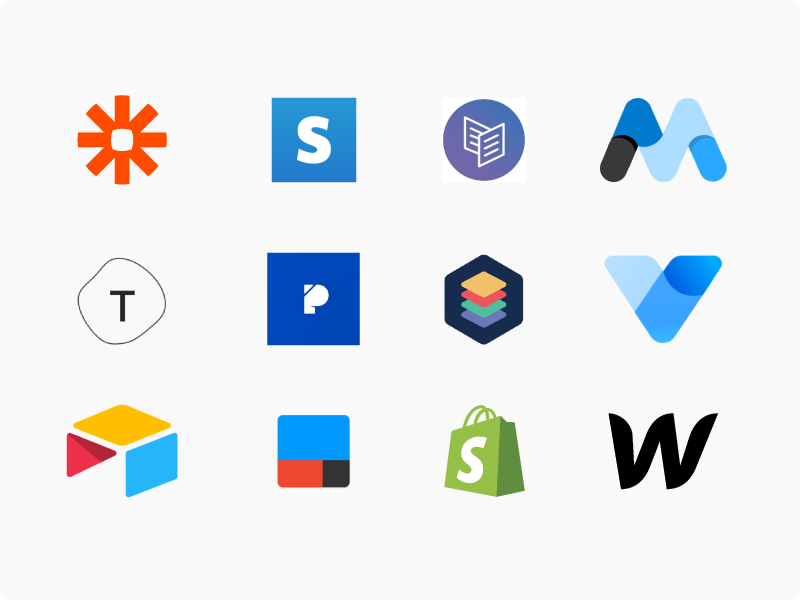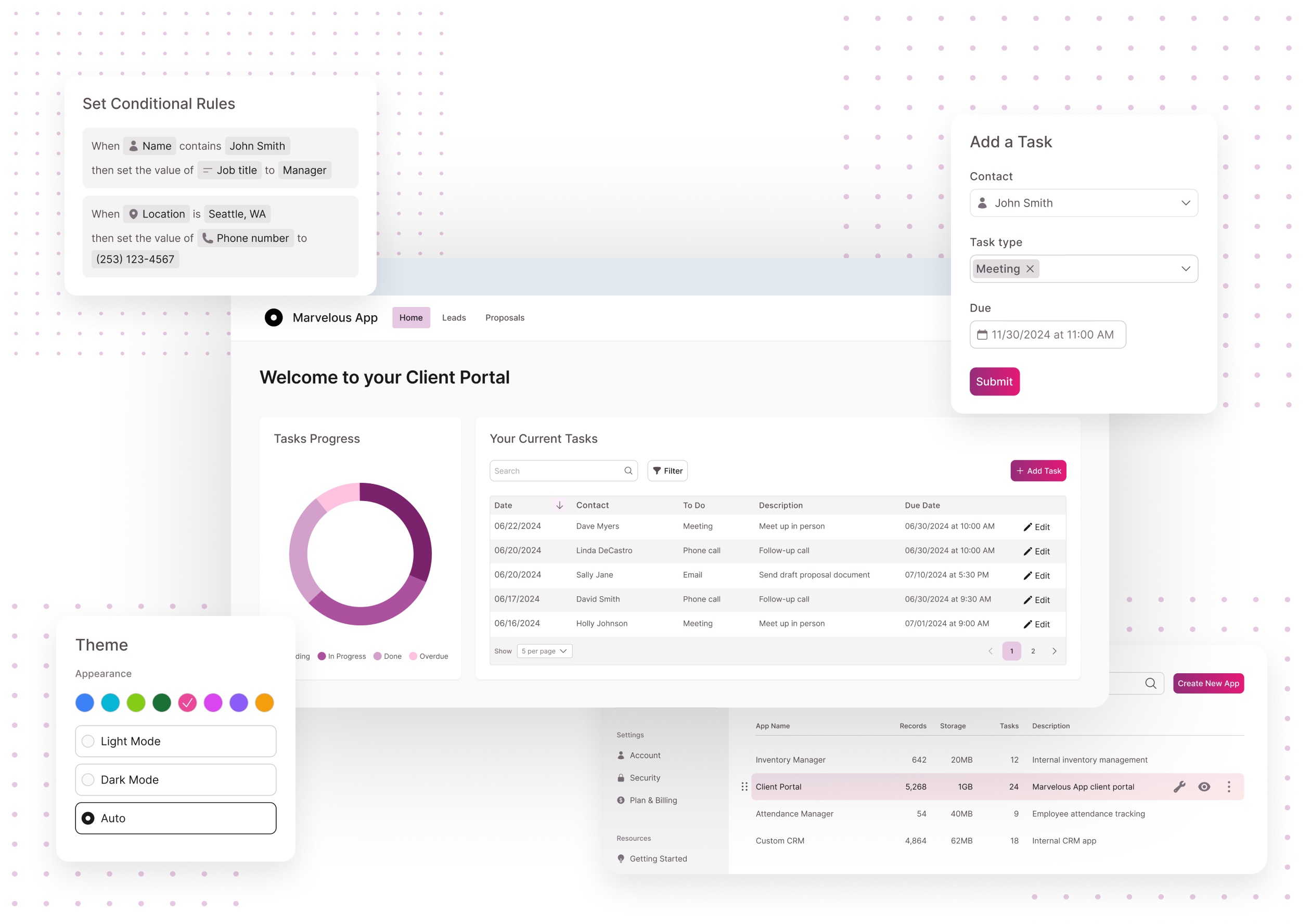Discover How Scalable Databases Can Be Used Without Coding to Enhance Your Service Workflow
In today's busy service environment, the capacity to manage and assess data efficiently is extremely important. Scalable data sources, specifically when combined with no-code remedies, offer a transformative technique that equips non-technical users to streamline operations. By using tools that call for no coding proficiency, organizations can enhance their operational capabilities while reducing dependancy on IT sources. The genuine inquiry lies in recognizing exactly how these options can be customized to specific service demands and what possible difficulties might arise in their application. Checking out these facets can brighten the course to functional quality.
Recognizing Scalable Data Sources
Scalable data sources are important for contemporary organization operations, permitting organizations to effectively take care of increasing volumes of information without compromising performance. These databases are developed to expand and adjust to the altering needs of a service, making certain that they can handle larger datasets and more complex questions as business needs evolve.
Comprehending scalable databases includes identifying their two primary types: vertical scaling and horizontal scaling. Vertical scaling, or "scaling up," involves adding more power (CPU, RAM) to an existing server to enhance performance. Conversely, horizontal scaling, or "scaling out," involves adding a lot more web servers to disperse the tons, which typically causes higher adaptability and fault tolerance.
An additional essential element is the style of scalable data sources, which can be either non-relational or relational. Relational databases, such as MySQL and PostgreSQL, are structured and utilize SQL for inquiries, while non-relational databases, like MongoDB and Cassandra, use even more adaptability with disorganized data.
Eventually, comprehending scalable databases is important for companies aiming to leverage information as a strategic property, allowing them to stay competitive in an increasingly data-driven setting.

Advantages of No-Code Solutions
Unlocking the capacity of no-code remedies empowers services to simplify operations and enhance efficiency without the demand for considerable programming understanding. These systems permit non-technical users to produce, customize, and take care of data sources easily, thus democratizing access to modern technology throughout groups.
One of the primary benefits of no-code options is their rate of execution. Services can promptly release applications and automate procedures, substantially lowering the moment invested on development cycles. This agility enables organizations to respond quickly to market modifications and consumer demands, cultivating an affordable edge.
Additionally, no-code platforms reduce reliance on IT divisions for daily tasks, enabling technical teams to concentrate on even more complicated tasks that call for specialized skills. This change not just maximizes source appropriation however additionally promotes development within the company.
Cost-effectiveness is another advantage, as no-code remedies can lower advancement and maintenance costs. By minimizing the demand for coding expertise, firms can harness the capacities of their existing workforce without the overhead of employing additional personnel.
Popular No-Code Data Source Equipment
The rise of no-code solutions has actually caused the introduction of different database devices that satisfy organizations looking for performance and accessibility. These devices encourage users with restricted technological expertise to produce, manage, and adjust data sources perfectly.

Caspio stands apart for its ability to build internet applications with no coding. It enables services to produce robust databases and release applications rapidly, satisfying numerous sector requirements. Propensity supplies powerful information and easy why not try this out to use user interfaces administration capabilities, allowing organizations to develop customized applications customized to their workflows.

Usage Cases in Company Operations
How can services utilize database tools to enhance their operations? Scalable databases supply organizations with powerful capabilities to manage and evaluate information without the demand for substantial coding understanding. These tools can streamline numerous business procedures, ultimately leading to boosted performance and performance.
One prominent usage instance is consumer partnership administration (CRM) Services can utilize scalable data sources to track consumer communications, preferences, and feedback, enabling customized communication and far better service. By systematizing this info, groups can team up more efficiently and react to consumer demands in real-time.
Another substantial application is supply monitoring. Firms can use no-code database tools to keep an eye on stock levels, track shipments, and projection demand. This ensures optimum stock degrees, reduces waste, and minimizes stockouts.
In addition, task management can take advantage of scalable databases by allowing teams to take care of tasks, deadlines, and sources in an unified platform. With real-time updates and information visualization, project supervisors can make informed decisions.
Getting Going With Implementation
Applying scalable data sources in company operations requires a structured approach to make sure successful assimilation and utilization. The primary step is to carry out a complete requirements evaluation, determining certain service requirements, data types, and anticipated development patterns. This fundamental understanding will certainly guide the option of the suitable database solution.
Next, pick an easy to use, no-code data source platform that aligns with your operational objectives. no-code. Several modern solutions use user-friendly user interfaces, permitting non-technical customers to take care of information efficiently. After selecting a platform, establish a clear information architecture that outlines just how information will be arranged, accessed, and kept
Training is important; make sure that group members are equipped with the required skills to make use of the database. Take into consideration providing tutorials or workshops to familiarize staff with the system's capabilities.
Conclusion
To conclude, the integration of scalable data sources with no-code solutions offers substantial advantages for service procedures. These systems encourage non-technical browse around this web-site individuals to successfully handle and assess information, helping with enhanced decision-making and partnership. By embracing tools such as Airtable and Idea, companies can minimize and enhance procedures dependence on IT resources. Eventually, leveraging these technologies can lead to enhanced productivity and operational efficiency, positioning companies for continual development in a competitive landscape.
One preferred no-code database tool is Airtable, which integrates the capability of a spread sheet with the power of a database.How can services leverage database tools to improve their operations? Businesses can make use of scalable data sources to track consumer communications, read the article choices, and comments, enabling individualized interaction and far better service.Implementing scalable databases in company procedures requires an organized approach to ensure successful assimilation and utilization.In conclusion, the combination of scalable databases through no-code remedies provides significant benefits for organization procedures.